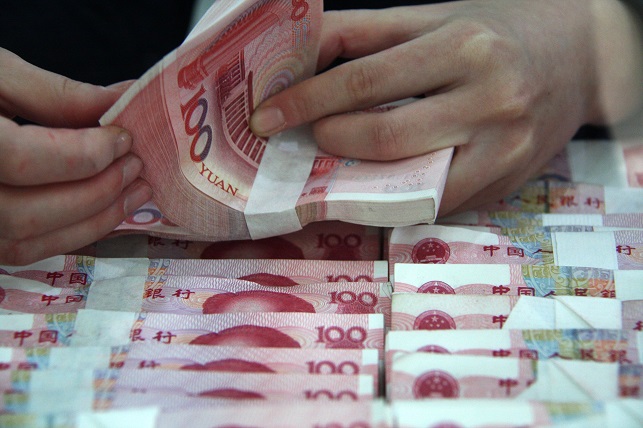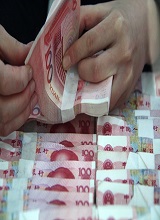Latest

Decoding China’s Industrial Policies
Hanming Fang, Ming Li, Guangli Lu, Jul 02,
2025
Industrial policy is often discussed through high-level narratives and flagship initiatives, yet its implementation—particularly at the subnational level—remains opaque. We leverage large language models (LLMs) to systematically analyze over three million government documents from 2000 to 2022, extracting structured policy information to decode China’s industrial policy at various levels of government. Combining these newly constructed granular industrial policy data with micro-level firm data, we document four sets of facts on China’s industrial policies, including the economic and political rationality of the choice of the target sectors, the dynamics of the policy tools, the diffusion and similarity of policies, and the effects on firm entry and productivity.


Excessive Issuance of New Funds in China and Implications for Investor Protection
Shuai Ye, Jinfan Zhang, Kaixuan Zheng, Jun 25,
2025
The Chinese mutual fund industry is only one-tenth the size of its US counterpart, but the number of funds in China has surpassed that of the US. Our study shows that such a large number of funds is unhealthy: managers issue new funds repetitively with different custodian banks, resulting in the average manager overseeing 2.7 funds. Managers shift profits to new funds in order to attract more flows. Among funds under the same manager, new funds have higher returns than old funds, spurring concerns over investor protection.


Do Chinese Cultures Spawn Family Businesses
Joseph P. H. Fan, Qiankun Gu, Joyce Xin Yu, Jun 18,
2025
Using a sample of Chinese private-sector firms that went public, we find that founders from the country’s regions with stronger collectivist cultures engage more family members as managers, retain more firm ownership within the family, and share the controlling ownership with more family members. Our study suggests that the collectivist culture boosts the formation of family businesses because the collectivist culture reduces information asymmetry, shirking problems, and associated monitoring costs among family members.


Visible Hands: Professional Asset Managers’ Expectations and the Stock Market in China
John Ammer, John Rogers, Gang Wang, Yang Yu, Jun 11,
2025
Mutual funds have become an important type of private institutional investor in Chinese security markets, with assets under management exceeding $3 trillion. We study how Chinese fund managers’ growth expectations affect their equity investment decisions, and in turn, the effects on stock prices. We identify a strong short-run causal effect of growth expectations on stock returns. We also find that fund investment helps bring prices in line with firms’ longer-run earnings prospects.


Building Tall, Falling Short: An Empirical Assessment of Chinese Skyscrapers
Ziyang Chen, Ting Chen, Yatang Lin, Jin Wang, Jun 04,
2025
Amid debates around state-led urbanization in developing countries, we analyze the causes and consequences of China’s skyscraper boom. We find that local governments often subsidize these projects through discounted land prices, motivated by political incentives. However, we find that such subsidies offer minimal long-term benefits, largely due to a mismatch with local conditions.


Returnees and Innovation: Evidence from Chinese Publicly Listed Firms
Yibo Qiao, Andrea Ascani, Stefano Breschi, Andrea Morrison, May 28,
2025
We investigate the relationship between high-skill returnees and innovation of Chinese publicly listed firms. To this aim, we construct a unique dataset of 2,499 firms over the period 2002–2016 by combining three different data sources (i.e. CNRDS, CSMAR, and LinkedIn). Our results show that different typologies of returnees (employees, technologists, and managers) with different experiences abroad (work versus study) may bring back different skills and impact differently on firm innovation.


Interest rates and exchange rates when the money supply goes up
Saleem Bahaj, Ricardo Reis, May 21,
2025
The power of monetary policy to affect interest rates and exchange rates depends on the downward slope of the demand function. This column uses the Chinese experiment with parallel currencies to study the impact of sudden increases in money supply. The authors find causal evidence that increases in money supply lead to currency depreciations, and use this to quantify the interest elasticity of reserve demand. The results can be used to understand how the People’s Bank of China maintained the peg between the mainland and parallel currencies.


A New Method for Estimating Product-Level Emission Intensities and Implications for EU’s Carbon Border Adjustment Mechanism
Ohyun Kwon, Hao Zhao, Min Qiang Zhao, May 14,
2025
We develop a new method for estimating product-level emission intensities (PLEI) by combining firm-level emissions with firm-product output data. This methodological innovation produces highly granular emission measures that are essential for both academic research and climate policy design. Applying the method to Chinese manufacturing data, we uncover stark heterogeneity: the top 10% of emission-intensive products account for 75% of emissions but only 4% of exports. We incorporate our PLEI estimates into a general equilibrium trade model to assess the EU’s Carbon Border Adjustment Mechanism (CBAM). Our simulations demonstrate that, at the same carbon price, product-level CBAM achieves substantially greater emissions reductions than sector-level CBAM, while causing markedly less trade disruption. These results underscore the importance of product-level emission intensity data in designing targeted and cost-effective climate policies.


The Anatomy of Chinese Innovation: Insights on Patent Quality and Ownership
Philipp Boeing, Loren Brandt, Ruochen Dai, Kevin Lim, Bettina Peters, May 07,
2025
Chinese patenting has become narrower and less innovative over time. The role of overseas knowledge has also declined sharply. These findings are salient in the context of a marked slowdown in economic growth in China and rising concerns of technological decoupling with the US.


Debt Management and Strategic Interactions in Top-down Bureaucracy: Evidence from China
Xi Qu, Zhiwei Xu, Jinxiang Yu, Apr 30,
2025
The Chinese central government implemented a series of measures to establish a top-to-bottom debt ceiling management system starting in 2015. Under this regulatory framework, public debt issuance for a prefecture city is subject to a ceiling (quota) determined through a hierarchical procedure. Based on a comprehensive dataset, we investigate what factors determine the allocations of debt ceiling to prefectural cities in China after the debt management reform. We find that the distributional outcome of the debt ceilings relies on the bilateral interactions of local and their superior governments. We also estimate the effect of ceiling allocation on the real economy, as well as the potential risk associated with implicit debt accumulation.

Recent
How Liberalizing Trade with China Led to a Boom in International Students in the US
Gaurav Khanna, Kevin Shih, Ariel Weinberger, Mingzhi Xu, Miaojie Yu, Aug 16,
2023
Focusing on China’s accession to the World Trade Organization, we show that Chinese cities with more exposure to trade liberalization sent more students to US universities.
Regional Variation of GDP per Head within China, 1080–1850: Implications for the Great Divergence Debate
Stephen Broadberry, Hanhui Guan, Sep 28,
2022
We provide the first regional breakdown of GDP per head for China from the Song dynasty to the Qing, so that regions of similar size can be compared between Europe and Asia to establish the timing of the Great Divergence of living standards.
Combating Cross-Border Externalities
Shiyi Chen, Joshua Graff-Zivin, Huanhuan Wang, Jiaxin Xiong, Sep 21,
2022
China implemented a pioneering policy in 2011, the Ecological Compensation Initiative (ECI), which establishes side payments between upstream and downstream provinces in the Xin’an River Basin.
Assessing and Addressing the Coronavirus-Induced Economic Crisis: Evidence from 1.5 Billion Sales Invoice
Zhuo Chen, Pengfei Li, Li Liao, Zhengwei Wang, Aug 31,
2022
We probe the effects of the COVID-19 pandemic and the subsequent containment policies on business activities in China by exploiting big data on 1.5 billion sales invoices. The average drop in sales was between 23% and 35%, depending on firm size, for the 12-week period after the Wuhan lockdown.
Industrial Land Discount in China: A Public Finance Perspective
Zhiguo He, Scott Nelson, Yang Su, Anthony Lee Zhang, Fudong Zhang, Jul 25,
2022
Local governments, which serve as monopolistic land sellers in China, face a trade-off when deciding to supply residential land versus industrial land. This trade-off is determined by the different time profiles of revenues from industrial and residential land sales, local governments’ financial constraints, and the extent of local governments’ tax revenue sharing with other levels of government.
Industry/Policy View Omnia Juncta in Uno: Foreign Powers and Trademark Protection in Shanghai’s Concession Era
Laura Alfaro, Cathy Ge Bao, Maggie X. Chen, Junjie Hong, Claudia Steinwender, Jul 20,
2022
Trademarks, which identify the source of goods and services, account for the majority of intellectual property filings worldwide. We investigate how firms adapt to the introduction of trademark institutions by exploring a historical precedent: China’s trademark law of 1923, an unanticipated and disapproved response to end foreign privileges in China.
Dollar Funding Stresses in China
Laura Kodres, Leslie Sheng Shen, Darrell Duffie, Jul 13,
2022
The need for US dollar funding during the financial stresses of March 2020, as the COVID-19 pandemic shocked markets, was evident in a number of countries (Avdjiev, Eren, and McGuire 2020; Bahaj and Reis 2020).
Serial Entrepreneurship in China
Loren Brandt, Ruochen Dai, Gueorgui Kambourov, Kjetil Storesletten, Xiaobo Zhang, Jul 06,
2022
New firms have been an important engine of growth in the Chinese economy (Brandt, Van Biesebroeck, and Zhang 2012). Drawing on data on the universe of all firms in China, we study entrepreneurship and the creation of new firms in China through the lens of entrepreneurs who operate a series of firms over their lifetime, i.e., serial entrepreneurs (SE).
An Empirical Overview of Chinese Capital Market
Grace Xing Hu, Jun Pan, Jiang Wang, Jun 29,
2022
We provide an empirical review of the Chinese capital market, focusing on the basic return and risk characteristics of its major asset classes, as well as a comparison to the US market. All major asset classes in China have significant higher volatilities than their counterparts in the US market, but they do not always yield larger returns. Small-company stocks, short-, medium-, and long-term treasury bonds outperform their US counterparts, while large stocks underperform and long-term enterprise bonds yield similar returns.
Mapping U.S.-China Technology Decoupling, Innovation, and Firm Performance
Pengfei Han, Wei Jiang, Danqing Mei, Dec 01,
2021
We develop measures for technology decoupling and dependence between the U.S. and China based on combined patent data. The first two decades of the century witnessed a steady increase in technology integration (or less decoupling), but China’s dependence on the U.S. increased (decreased) during the first (second) decade. Decoupling in a technology field predicts China’s growing dependence on U.S. technology, which, in turn, predicts less decoupling further down the road...
Institutional Sponsors
Executive Committee
Advisory Board
Editorial Board
- Laura Alfaro
- Chong-En Bai
- Panle Jia Barwick
- Thorsten Beck
- Loren Brandt
- Markus Brunnermeier
- Hongbin Cai
- Chun Chang
- Hui Chen
- Kaiji Chen
- Maggie X. Chen
- Xilu Chen
- Lin William Cong
- Yongheng Deng
- Jun Du
- Li Gan
- Cathy Ge Bao
- Joseph Gyourko
- Zhiguo He
- Harrison Hong
- Junjie Hong
- Yongmiao Hong
- Chang-Tai Hsieh
- Dashan Huang
- Yi Huang
- Yiping Huang
- Wenxi Jiang
- Keyu Jin
- Jiandong Ju
- Andrew Karolyi
- Laura Kodres
- Hongbin Li
- Shu Lin
- Jane Yu Liu
- Laura Xiaolei Liu
- Zheng Liu
- Prakash Loungani
- Xin Meng
- Jianjun Miao
- Albert Park
- Guangyu Pei
- Lin Peng
- Nancy Qian
- Yingyi Qian
- Leslie Sheng Shen
- Kang Shi
- Yushui Shi
- Zheng Song
- Mark M. Spiegel
- Claudia Steinwender
- Avanidhar Subrahmanyam
- Guoqiang Tian
- Cong Wang
- Jiang Wang
- Neng Wang
- Pengfei Wang
- Yong Wang
- Bin Wei
- Yi Wen
- Danyang Xie
- Daniel Yi Xu
- Lixin Colin Xu
- Zhigang Yuan
- Vivian Yue
- Tao Zha
- Bohui Zhang
- Huacheng Zhang
- Jun Zhang
- Junsen Zhang
- Tianyu Zhang
- Xiaobo Zhang
- Yongsheng Zhang
- Yaohui Zhao
- Li-An Zhou
- Ning Zhu
- Xiaodong Zhu




 Facebook
Facebook  Twitter
Twitter  Instagram
Instagram WeChat
WeChat  Email
Email 





